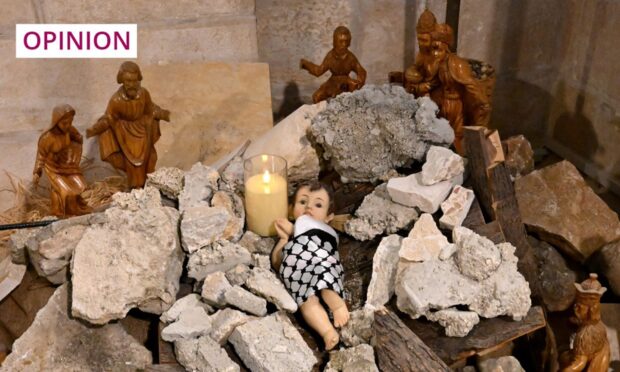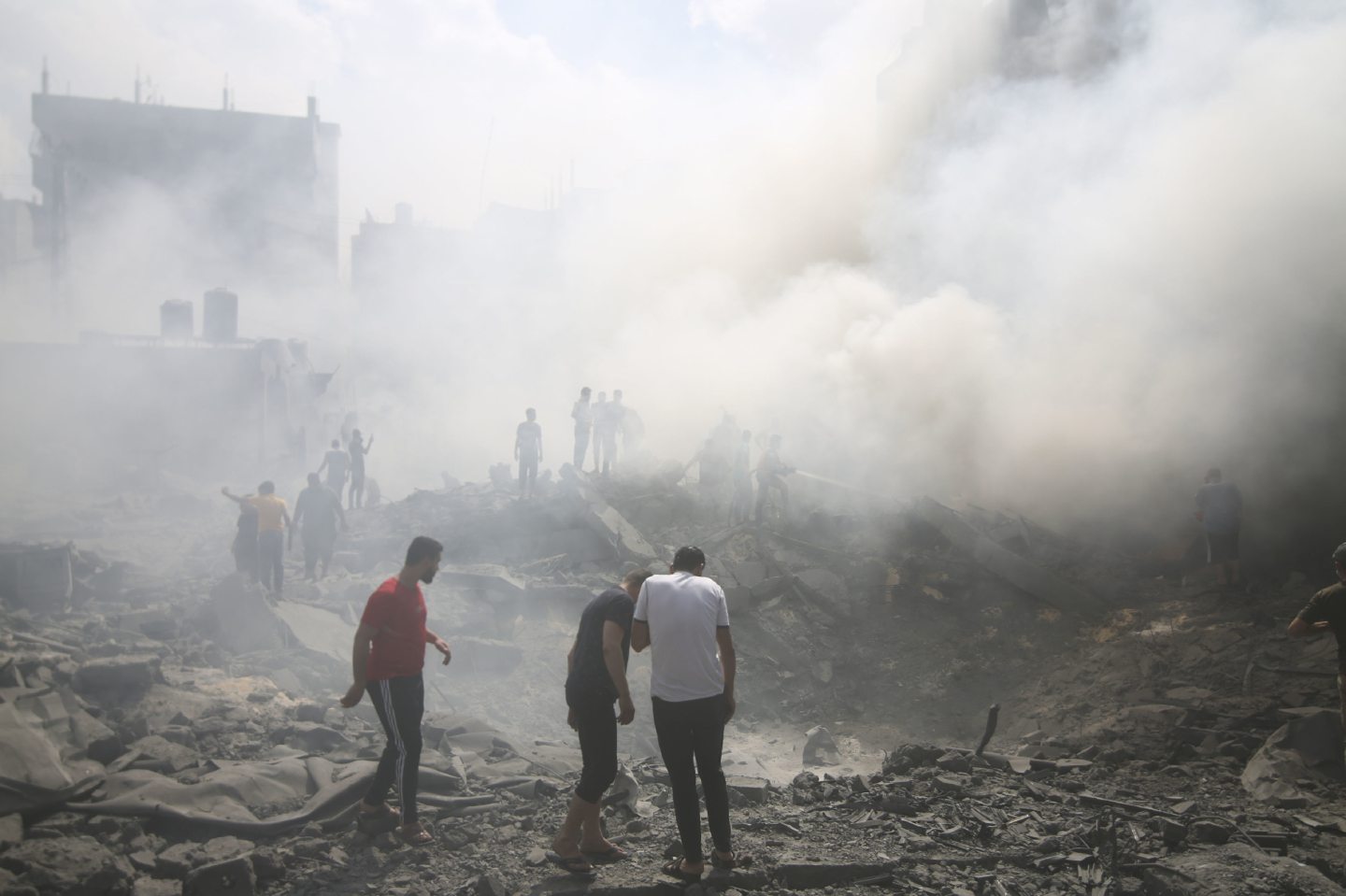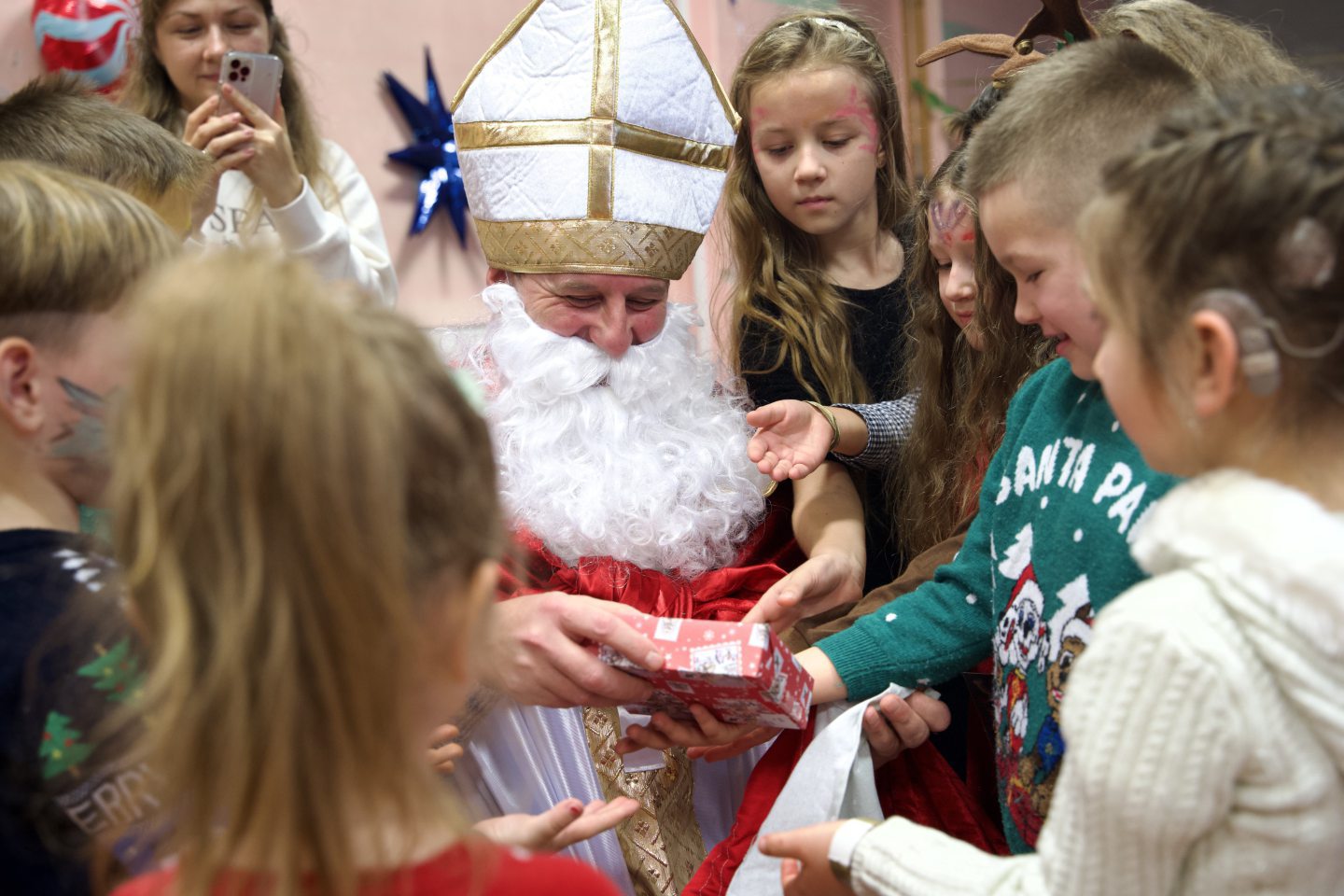The December moment arrived, as anticipated; the still, early morning air heavy with cold when the kitchen door pushed open, snow falling gently against the window.
It arrived mysteriously in the night, the snow, and the world seemed silently fresh again: fox prints crossing the grass to the overgrown thicket in the back corner of the garden where the fox family live; robin redbreast perched on the garden table.
The date in December is never the same, but come it does that moment, inevitably: a bittersweet experience when the wistful flood of memories of Christmas past and loved ones passed swirls with the budding optimism of Christmas yet to come. Except, this year, the optimism felt thin, and the silence of the snow felt emptier than usual; the cold shiver-inducing rather than invigorating.
The night before, I saw a baby, wrapped in a shroud, held up by her father, whose eyes looked mad with grief. Such a tiny figure, encased in white sheeting that was pulled tight at the top, like a shoe bag: a bag of thwarted dreams and possibilities on a television screen.
I thought, then, of the pictures I had seen of Christmas in Israel: the giant Christmas trees in the Christian quarters of Nazareth and Jerusalem, and the Basilica of the Nativity in Bethlehem. This year, there is no seasonal peace in that part of the world.
Even non-believers, as poets like Thomas Hardy have noted, are drawn by the crib at Christmas. But, right now, the baby in the manger is replaced by the baby in the shroud.
And, yet, there is something about December and Christmas, something that keeps reigniting a hope in humanity, that enables the flame of optimism to keep flickering, even in the wind that threatens to extinguish it.
We need to recognise the force of people power
The world is riven with violent division: insiders and outsiders; rich and poor; powerful and powerless. It is easy, sometimes, to feel inert and impotent in the face of the world’s tragedies and inequalities. What’s the point? What can we do?
But we are, each of us, part of the jigsaw. Each action we take contributes to the sum of the whole. Crucially, it is we who invest power in decision-makers, who have to say “enough is enough” in whatever way we can.
Mahatma Gandhi, who devoted his life to non-violence, said that the first step was to cultivate particular qualities in daily life: truthfulness, humility, tolerance and loving kindness. The expression “daily life” makes it seem that these things are somehow small, yet the sum of them can overpower their negative counterparts. Exercised by entire populations, they illustrate why that feeling of impotence is fraudulent.
The force of people power cannot be underestimated, but we need to recognise it, seize it, and make it our own. “The greatness of humanity,” Ghandi maintained, “is not in being human, but in being humane.”
As I stood in the kitchen, watching the fox tracks disappear into the undergrowth, I reflected that, like many people, I had never felt more alienated from the world around me than now. Was it the cumulative effect of Gaza and Ukraine? The rise of the fascist right in Europe? The strikes and cost-of-living crisis at home?
The unnerving feeling that the people of the world were in a constant state of competition for survival, not a collaboration to thrive? Whatever it was, my soul felt the scratch of discontent.
‘Hope’ is the thing with feathers
The truth, says psychologist Dr Rick Hanson, is that the human brain scans for negativity as a survival mechanism, operating “like Velcro for negative experiences and Teflon for positive ones.”
The pile of negative experiences inevitably grows higher than the positive pile, and the effect is that “what it feels like to be you can become undeservedly glum and pessimistic.” What we feel in our daily lives becomes reflected in what we feel about the world around us.
There is no reason to suppose, no evidence to support, the notion that the human capacity for goodness cannot outweigh a human propensity for evil.
Right now, thousands of volunteers of different ethnicities, some of whom have lost loved ones in the violence, are working together in the Israeli city of Haifa to build an organisation called Standing Together, the largest Arab-Jewish movement in Israel. It seeks to “preserve a sense of Israeli-Palestinian solidarity, identifying triggers for incitement and violence before they spiral.”
In the kitchen, the heating kicked in, and the coffee machine whirred, and the lights from the Christmas tree across the road glowed. Robin redbreast flew away and I watched his feathery flight, thinking of the importance of hope, and how the words of the American poet Emily Dickinson seemed more pertinent than ever this year. “‘Hope’ is the thing with feathers that perches in the soul, and sings the tune without the words, and never stops at all.”
Catherine Deveney is an award-winning investigative journalist, novelist and television presenter



Conversation